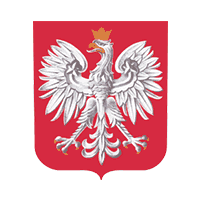Piotr Wojtacha, Janusz Orlof,Jerzy Picur
The effects of mining activity may often become visible after decades or even centuries. Potential investors are afraid of investing large financial resources in areas previously subjected to mining. This is why making an inventory of mining workings with surface access located in liquidated underground mines is necessary to assess the current risk and to suggest preventive measures. The article presents the methodology of risk assessment for this type of workings. It also discusses the results of the completed inventory for liquidated coal mines in the Dąbrowa Coal Basin (Zagłębie Dąbrowskie). Obtained information will be valuable for the development of local land use plans in municipalities located in post-mining areas and issuing decisions on the conditions of land development. Inventory reports may help the potential investors to appropriately design buildings and other structures. The primary source of information for the Dąbrowa Coal Basin inventory were the documents collected at the Surveying and Geological Documentation Archive by the State Mining Authority. The Archive was established in 1999 and is the only place in Poland holding the surveying and geological documentation of liquidated mining plants containing information about mining workings with surface access. The Archive collects, archives and provides access to these documents as well as information regarding the environment and its protection. This ordered collection of documents is used by construction authorities, police, prosecutors, courts, court experts, investors, designers, property owners, scientists and companies in business governed by the Geological and Mining Law.
Krzysztof Cybulski, Bogdan Malich, Eugeniusz Zellner
During the implementation of the research project “Improvement of work safety in mines”, the classification of harmful dusts hazard bas based on the monitoring (measurement) of the exposition of employees to harmful dusts. Based on these measurements, the respiratory system protection equipment with appropriate filtration class (half-masks) was selected. The requirement to use a specific type of the half-mask was the basis of classification for the given work station in the working regarding the appropriate category of harmful dusts hazard. These classification criteria for work stations in workings were often sources of misinterpretation.
A new classification proposal, in accordance with guidelines and assumptions made for all natural hazards in mines corresponds to actual harmful dusts hazard and not, as was previously the case, to the exposition of employees to such dusts. The level of this hazard is specified based on measurements of total dust and respirable dust levels in air, including the locations of dust sources. According to this classification, mining workings (or parts thereof) are categorised as with or without harmful dusts hazard depending on the weighted average of dust concentration compared to the largest allowable concentration (TLV) and the worst-case dust concentration measured. Further classification divides mining workings (or parts thereof) with harmful dusts hazard into two categories: where worst-case dust concentration measurement does not exceed (category A) or exceeds (category B) filtration capabilities of personal respiratory system protection equipment.
Marek Uszko, Leszek Kloc, Marek Szarafiński, Halina Potoczek
The absolute methane content in the mines of the Kompania Węglowa SA has been at a high level since 2003, despite a significant reduction in the level of coal production. In period of 2003 - 2013 in nine mines of Kompania Węglowa SA the methane drainage was used in order to secure the safe operation of mining plant. Investment activities were carried out systematically in order to develop methane drainage systems. It builds up more surface stations of methane drainage, as well as modernizes of existing facilities.
Delivery of gas from drainage systems to the surface creates the possibility and even the necessity of its economic use. Commercial utilization of methane-gas from coal seams improves the economic effect of mines and is an argument that allows planning further investments associated with the capturing and utilisation of the gas. The heat and the electricity, which are produced on the basis of methane from methane drainage will reduce energy purchases. Additional benefits arise from the sale of heat for external entities.
An additional effect of this activity is to protect the environment, associated with the reduction of greenhouse gas emissions and decrease consumption of fossil fuels.
Jacek Hendel, Katarzyna Cieślak, Inez Badecka, Stanisław Nagy
Coalbed methane (CBM) may become an important source of energy in the Upper Silesian Coal Basin. However, previous attempts of CBM exploitation did not give satisfactory results. Is it possible to be profitable an exploitation of CBM in the Upper Silesian Coal Basin by vertical wellbores without hydraulic treatments and ECBM-CO2/N2 operations? Answer on this question is the aim of this paper. To solve this problem various models were created. Many geological and petrophysical parameters e.g. permeability, porosity, sorption capacity, diffusion coefficient/sorption time etc. were taken form literature. The economic model including: capital expenditures, operating expenditures fixed and variable, estimated methane flow rate was developed for determining the economic viability of the project. Monte-Carlo method was used to modeling processes described above. Because of the extremely low value of permeability, CBM production, using vertical wellbore, without hydraulic treatment, will never be profitable.
Wojciech Pusz, Maciej Rdzanek
The bioaerosol occurred underground was considerably in mine’s shafts, produce a great number of spores and spread through the ventilation system. Frequent air changes, which are characteristic to the microclimate of the different kind of mine’s site. Some airborne fungal species (Aspergillus spp., Penicillium spp., Cladosporium spp.) that occur in the mine excavations and galleries could cause individual allergies and fungal infections in some exposed workers. Aim of this work was shown the potential role of aeromycological studies in mining.



